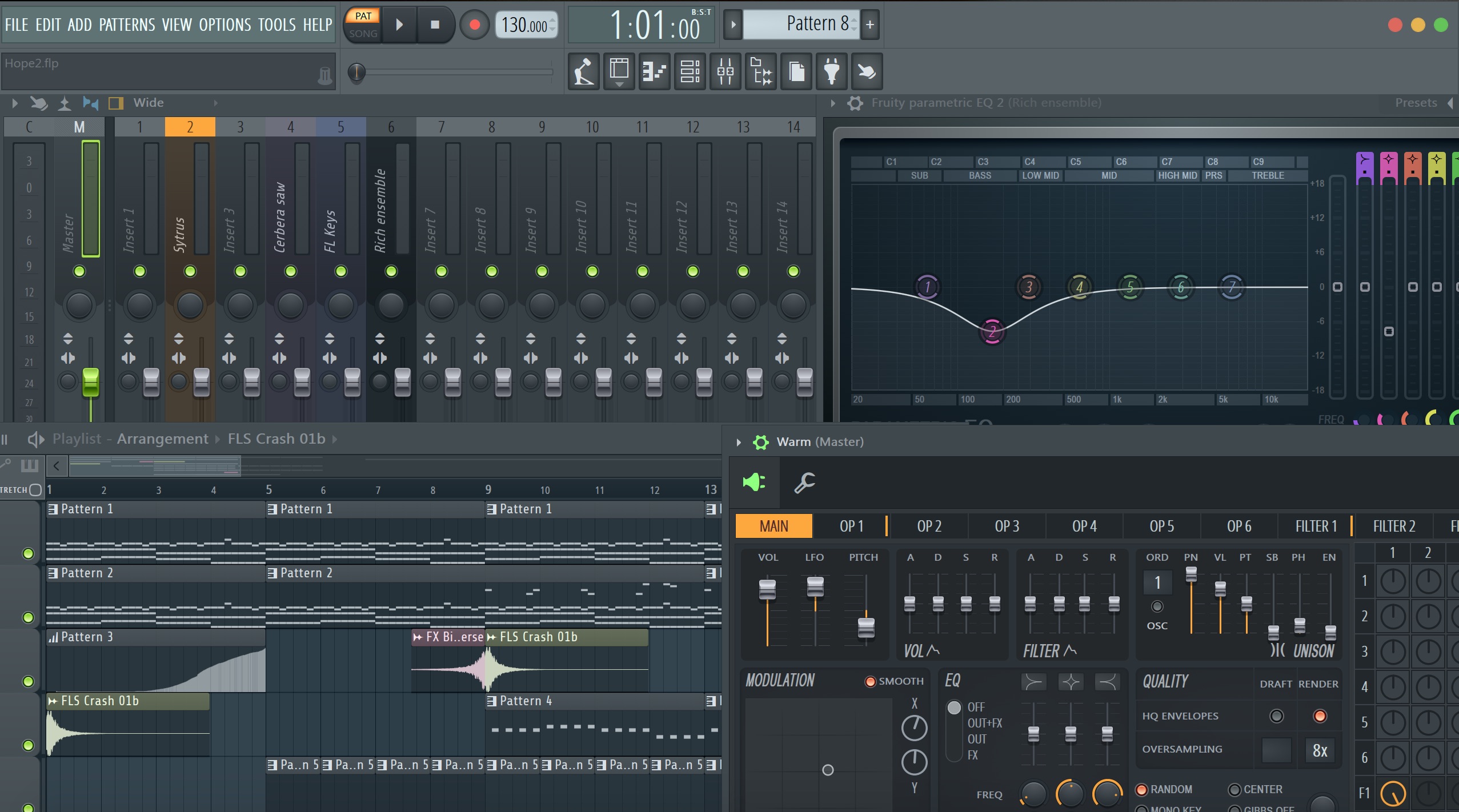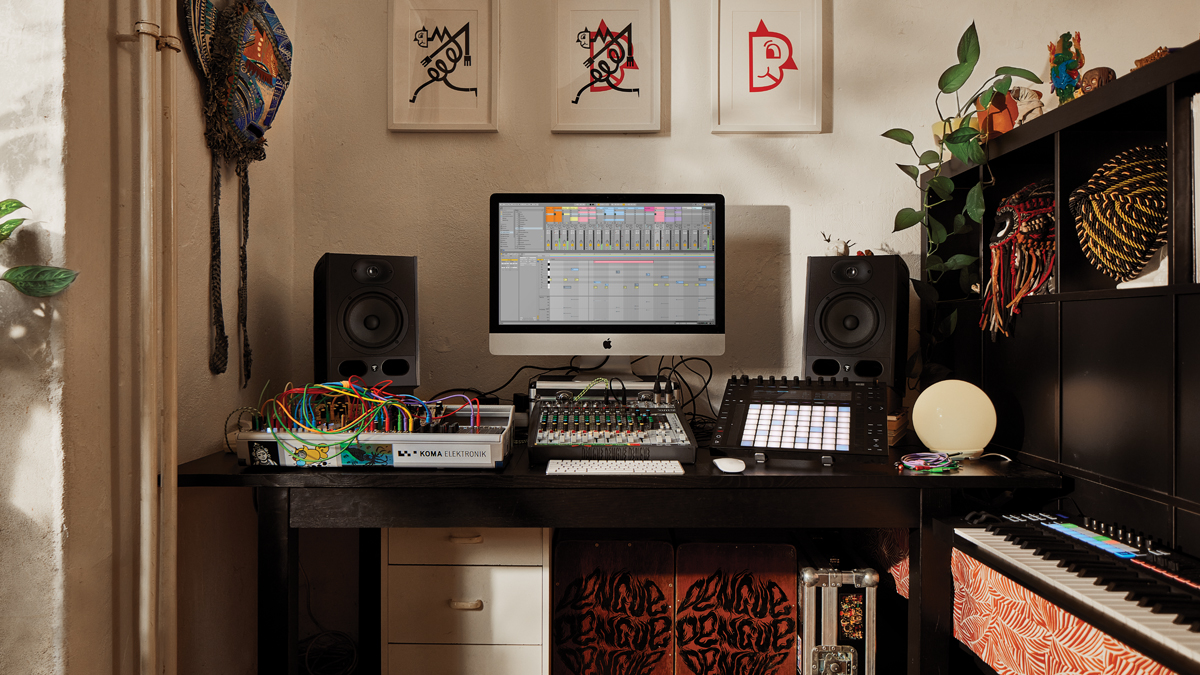Integrating Hardware with Your Digital Audio Workstation: A Practical Guide
For music lovers seeking to elevate their productions, understanding how to integrate hardware with digital audio workstations (DAWs) is crucial. At theautonomics.com, we understand the power of blending the tactile experience of hardware with the flexibility of a DAW. Mastering this integration unlocks a new level of creative control and sonic possibilities. This guide provides practical advice and assistance on how to integrate hardware with digital audio workstations, ensuring a seamless workflow.
Explore
- 1 Understanding the Basics of DAW Integration
- 2 Connecting Your Hardware
- 3 Configuring Your DAW
- 4 Working with MIDI Controllers
- 5 Integrating Synthesizers and Other Instruments
- 6 Troubleshooting Common Integration Issues
- 7 Advanced Techniques for Seamless Integration
- 8 Utilizing Hardware for Monitoring
- 9 Expanding Your Creative Palette
- 10 Choosing the Right Hardware for Your DAW
- 11 Optimizing Your Workflow
- 12 The Power of Hybrid Production
- 13 Mastering the Art of Integration
Understanding the Basics of DAW Integration
How to integrate hardware with digital audio workstations begins with a clear understanding of your setup. This involves knowing the capabilities of both your hardware and your DAW. Different DAWs have varying levels of support for different hardware interfaces, controllers, and synthesizers. Before you begin, check your DAW’s manual or online resources to ensure compatibility. A compatible audio interface is often the cornerstone of successful hardware integration. It acts as the bridge between your analog instruments and your digital workstation. Choosing the right interface with sufficient inputs and outputs is vital, depending on the number of instruments you plan to use simultaneously.
Connecting Your Hardware
How to integrate hardware with digital audio workstations also involves the physical connections. This is a straightforward process, but precision is key. Start by connecting your audio interface to your computer using the appropriate cables (typically USB, Thunderbolt, or Firewire). Then, connect your microphones, instruments, and other hardware to the audio interface’s inputs. Make sure to use the correct type of cable and connector for each piece of equipment. Incorrect connections can lead to signal loss, noise, or even damage to your equipment. Remember to always power down your equipment before making any physical connections to avoid electrical surges.
Configuring Your DAW
Successfully learning how to integrate hardware with digital audio workstations necessitates proper DAW configuration. Once your hardware is physically connected, you need to configure your DAW to recognize and utilize it. This typically involves selecting the correct audio interface as your input and output device within your DAW’s settings. You might also need to configure the sample rate and bit depth to match your audio interface’s capabilities. Furthermore, you’ll need to set up individual input and output channels for each piece of connected hardware. This allows you to route audio signals from specific instruments to specific tracks within your DAW. Proper routing is crucial for mixing and mastering your project.
Working with MIDI Controllers
How to integrate hardware with digital audio workstations extends to MIDI controllers. MIDI controllers provide a hands-on approach to controlling various aspects of your DAW, including virtual instruments, effects, and automation. Connecting a MIDI controller is usually as simple as connecting it to your computer via USB or MIDI cables. Once connected, you need to configure your DAW to recognize the controller. This involves selecting the controller in your DAW’s MIDI settings. You may also need to assign MIDI controllers to specific functions within your DAW using the controller’s mapping software or your DAW’s MIDI mapping features. This allows you to control parameters such as volume, panning, and effects in real-time, providing a more intuitive and expressive workflow.
Integrating Synthesizers and Other Instruments

How to integrate hardware with digital audio workstations also includes synthesizers and other instruments. Integrating external synthesizers and other instruments into your DAW often requires an audio interface with sufficient inputs. Connect the outputs of your synthesizers to the inputs of your audio interface. Then, route these inputs to individual tracks in your DAW. This allows you to record and process the audio from these instruments. Many synthesizers also offer MIDI capabilities, allowing you to control them from your DAW or a MIDI controller. This provides a hybrid approach, combining the sonic characteristics of analog synthesizers with the precision and flexibility of digital control. Explore the possibilities of combining your hardware synthesizers with virtual instruments within your DAW for unique sonic textures.
Troubleshooting Common Integration Issues
Even with careful planning, you might encounter challenges when learning how to integrate hardware with digital audio workstations. Common issues include driver conflicts, audio dropouts, and unexpected noise. Driver conflicts can often be resolved by updating your audio interface’s drivers. Audio dropouts might be due to insufficient processing power or buffer size issues. Adjusting your DAW’s buffer size can often alleviate this problem. Unexpected noise can stem from grounding issues or faulty cables. Try different cables and ensure proper grounding to resolve this. Always refer to your DAW’s manual and your audio interface’s documentation for troubleshooting tips and solutions.
Advanced Techniques for Seamless Integration
How to integrate hardware with digital audio workstations can also involve more advanced techniques. For example, you can use advanced routing techniques to create complex signal flows between your hardware and your DAW. This allows for creative effects processing and signal manipulation. You can also explore the use of external effects processors, connecting them to your audio interface for processing audio signals before they reach your DAW. This approach allows you to utilize the unique sonic characteristics of high-end hardware effects. Furthermore, exploring automation techniques can help you create dynamic and expressive performances. Automating parameters within your DAW using your MIDI controller adds another layer of creative control.

Utilizing Hardware for Monitoring
How to integrate hardware with digital audio workstations also involves effective monitoring. Proper monitoring is essential for ensuring the accuracy of your recordings and mixes. Your audio interface typically provides multiple monitoring options, including direct monitoring and DAW monitoring. Direct monitoring allows you to hear your instruments directly without latency, which is ideal for tracking. DAW monitoring allows you to hear your instruments with effects and processing applied, which is useful for mixing and mastering. Understanding the differences between these monitoring options is key to achieving accurate and efficient workflows. Experiment with different monitoring methods to find what works best for your workflow.
Expanding Your Creative Palette
How to integrate hardware with digital audio workstations significantly expands your creative palette. By combining the strengths of both hardware and software, you can achieve a level of sonic versatility that would be difficult to achieve with either alone. The tactile nature of hardware instruments and controllers can inspire a more intuitive and expressive workflow. Meanwhile, the precision and flexibility of a DAW allow for detailed editing, mixing, and mastering. This synergy between hardware and software fosters a dynamic creative process, pushing the boundaries of musical expression. Embrace this blend of technology and artistry to unlock your full creative potential.
Choosing the Right Hardware for Your DAW

Successfully integrating hardware into your workflow begins with making informed decisions about which hardware to purchase. Consider your budget, the types of instruments you play, and the specific features you need from your hardware. Research different audio interfaces, controllers, and instruments to find those that best suit your needs and budget. Reading reviews and comparing specifications can help you make informed decisions. Prioritize compatibility with your DAW to ensure a seamless workflow. Remember that investing in high-quality hardware can significantly improve the sound and overall experience of your productions.
Optimizing Your Workflow
How to integrate hardware with digital audio workstations is not just about technical setup, but also about optimizing your workflow for maximum efficiency and creativity. Experiment with different configurations and techniques to find what works best for you. Develop a system that allows you to switch easily between hardware and software instruments. Use shortcuts and automation features to streamline your workflow. The more efficient your workflow, the more time you can spend focusing on the creative aspects of music production. A well-optimized workflow is crucial for maintaining focus and inspiration.
The Power of Hybrid Production
The ability to seamlessly integrate hardware with your DAW opens up the exciting world of hybrid production. This approach combines the warmth and character of analog instruments with the precision and flexibility of digital tools. This allows for a unique blend of sounds and textures, creating a distinctive sonic signature. Experiment with different combinations of hardware and software instruments to discover your own unique sound. Embrace the possibilities of hybrid production to push the boundaries of your creativity. By mastering how to integrate hardware with digital audio workstations, you empower yourself to create music that is both innovative and expressive.
Mastering the Art of Integration
Ultimately, mastering how to integrate hardware with digital audio workstations is an ongoing journey of learning and experimentation. There is no single "right" way to do it. The best approach is the one that allows you to express your creativity most effectively. Don’t be afraid to experiment with different configurations and techniques. Embrace the challenges and learn from your mistakes. The more you experiment, the more you will discover the unique possibilities of combining hardware and software in your music production.
Conclusion
Successfully integrating hardware with your DAW unlocks a world of creative possibilities, transforming your music production workflow. By understanding the fundamentals, troubleshooting common issues, and optimizing your workflow, you can harness the power of both hardware and software to achieve a truly unique and expressive sound. Embrace the journey of exploration and experimentation, and discover the boundless potential of hybrid music production.
